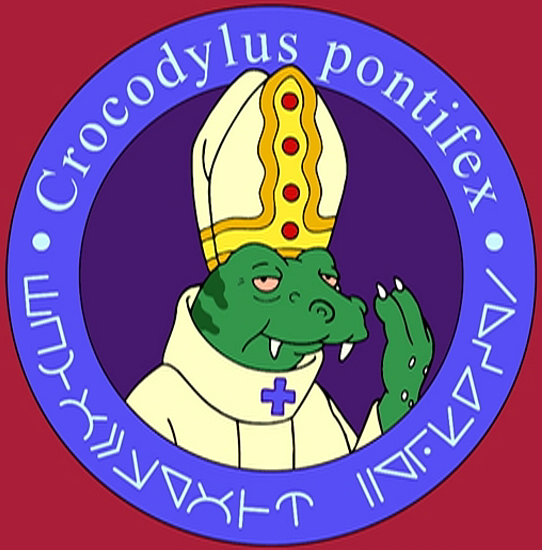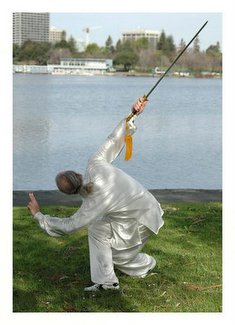Cross posted @ God Is 4 Suckers!
 In the wild weird and wooly world of woo, the Catholic Church has had some truly bizarre ideas. From stigmata to the cilice, from the flagrum to exorcism, these people seem to have all sorts of crazy ideas.
In the wild weird and wooly world of woo, the Catholic Church has had some truly bizarre ideas. From stigmata to the cilice, from the flagrum to exorcism, these people seem to have all sorts of crazy ideas.
One of the major fantasies of the monotheists is the concept of the end of the world. As we see lives begin and end, we project this cycle of life and death and rebirth onto the larger world, and the theists among us re-interpret wildly to retrofit reality to their pre-supposed peccadilloes.
Among the odder oddities one can stumble across in the laundry lists of lunacy, is the Prophecy of the Popes, as given by one alleged Saint Malachy:
The Prophecy of the Popes, attributed to Saint Malachy, is a list of 112 short phrases in Latin. They purport to describe each of the Roman Catholic popes (along with a few anti-popes), beginning with Pope Celestine II (elected in 1143) and concluding with a pope described in the prophecy as "Peter the Roman", whose pontificate will end in the destruction of the city of Rome.
Are there issues with this? You bet your sweet aunt’s fanny there is.
The prophecy was first published in 1595 by Arnold de Wyon, a Benedictine historian, as part of his book Lignum Vitæ. Wyon attributed the list to Saint Malachy, the 12th‑century bishop of Armagh in Northern Ireland. According to the traditional account, in 1139, Malachy was summoned to Rome by Pope Innocent II. While in Rome, Malachy purportedly experienced a vision of future popes, which he recorded as a sequence of cryptic phrases. This manuscript was then deposited in the Roman Archive, and thereafter forgotten about until its rediscovery in 1590.
‘Cryptic phrases’? Is this facepalm time? ![]()
On the other hand, Bernard of Clairvaux's biography of Malachy makes no mention of the prophecy, nor is it mentioned in any record prior to its 1595 publication. Some sources, including the most recent editions of the Catholic Encyclopedia, suggest that the prophecy is a late 16th‑century forgery. Some have suggested that it was created by Nostradamus and was credited to Saint Malachy so the purported seer would not be blamed for the destruction of the papacy. Supporters, such as author John Hogue, who wrote a popular book titled The Last Pope about the claims, generally argue that even if the author of the prophecies is uncertain, the predictions are still valid.
How so? Let’s take a brief look into it:
Interpretation of the mottos has generally relied on finding correspondences between the mottos and the popes' birthplaces, their personal arms, and the events of their pontificates. For example, the first motto, Ex castro Tiberis (From a castle on the Tiber), fits Pope Celestine II's birthplace in Città di Castello, on the Tiber.
Pope Celestine II (died March 8, 1144), born Guido di Castello, was pope from 1143 to 1144. Self-fulfilling prophecy there. Next.
Pope Clement XIII, referred to in the prophecy as Rosa Umbriae, the rose of Umbria, is stated to have used a rose "as his personal emblem" (his coat of arms does not include one, however, nor was he from Umbria nor had any but the most marginal connection with the region, having been briefly pontifical governor of Rieti, at the time part of Umbria). The technique of word play was evident in instances where interpreters find a phrase fitting more than one explanation.
‘Word play’ is christlation for ‘let’s make it fit!’
It is notable that where the interpretation of the prophecy is clear (as is the case for almost all of the Popes prior to 1590), the reference is almost always to some characteristic possessed by the Pope prior to assuming the Papacy -- e.g., his birthplace, his arms, his surname, or his cardinal see. However, for more recent Popes, efforts to connect the prophecy with the pope have often focused on the events of his pontificate.
This sounds more like a literary version of cold reading to me.
In recent times, some interpreters of prophetic literature have drawn attention to the prophecies, both because of their success in finding connections between the prophecies and recent popes, and because of the prophecies' imminent conclusion. Interpretations made before the elections of recent popes have not generally predicted their papacies accurately.
Small wonder that.
For those interested, the popes and their ‘corresponding mottos’ can be found here. And the skepticism kept on coming for the prophecies of Saint Malarkey:
Spanish writer father Benito Jerónimo Feijóo wrote in his Teatro Crítico Universal (1724-1739), in an entry called Purported prophecies, that the ones by Saint Malachy's were a shameful forgery, claiming that they were created ad hoc during the 16th century. As a proof, he offers an accurate fact: that the first time the prophecy is mentioned is on a handwritten account by patriarch Alfonso Chacón (a.k.a Alphonsus Ciacconus, 1540-1599) in 1590 (this account would be later published, in 1595, by the abovementioned historian Arnold de Wyon); in this account, Chacón only comments the prophecies until the papacy of Urban VII (whose papacy only lasted September 1590, and was the current pope at the time Chacón wrote the comment). According to Feijóo, Chacón, who held a great intellectual prestige at the time, was lured to comment the prophecies by someone who wanted to help cardinal Girolamo Simoncelli (1522-1605) reach the papacy. By showing them to be accurate till Urban VII, it was expected people to believe the next ones; that way, Girolamo Simoncelli could be easily elected pope, since the prophecy after Urban VII's one tells about a pope Ex antiquitate urbis (from the antiquity of the city), a fact that seems to fit him, who was cardinal of Orvieto (literally "old city", urbs vetus), or at least better than Gregory XIV, who was elected pope after Urban VII. Thus, the forgery would have been useless, since Simoncelli was not elected pope. Jesuit father Claude-François Menestrier also claimed that the prophecies were forged in order to help the papal candidacy of Girolamo Simoncelli, offering similar reasons to those of Feijóo. Spanish historian José Luis Calvo points out that the prophecies seem to be very accurate till Urban VII, fitting perfectly even the antipopes, but that afterwards great efforts have to be made in order to make the prophecies fit their pope. Feijóo's explanation is usually regarded as being the most probable proof of the forgery.
So, nutshelling it: said ‘prophecies’ were forged in the 16th century, and were eerily accurate (if you accept the 12th century publication fib) up to Urban VII who was pope during…drum roll please…the 16th century. Many many tickle up the raisin (if I might use a little wordplay on an old bibble saying). For those of you who don’t get the esoteric mangling: it’s easy to see the writing on the wall, and it’s mostly graffiti that adorn the smoke and mirrors.
And one has to but Google this topic, to see that this obvious hoax has survived nearly 5 centuries, even though anyone with half a mind (or half a critical eye) can see that this is an utter fraud.
The ubiquity of stupidity is appalling.
Till the next post, then.














No comments:
Post a Comment